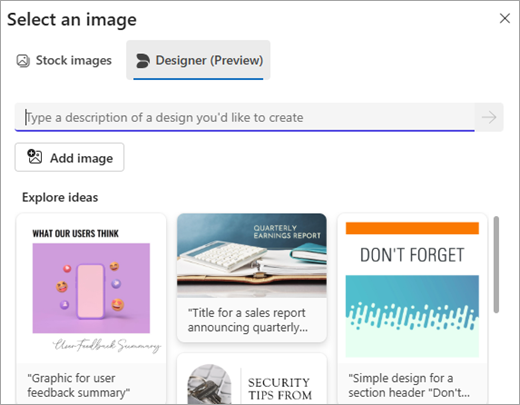EdTech Reality Check: What's Actually Working in UK Schools in 2024
Amidst the countless EdTech solutions available to schools today, which ones are delivering genuine value? Drawing from recent implementations across UK schools, we examine the technology tools and strategies that are making a measurable difference in teaching, learning, and school operations - s...

The Real Picture of EdTech in Schools Today
Research from the Education Policy Institute provides insight into the state of educational technology in UK schools. While 87% of schools report increased technology investment since 2020, approximately half indicate they are not yet maximising the potential of these resources. This suggests a notable disparity between technology acquisition and its effective integration into teaching and learning practices.
Current implementation of educational technology presents a complex picture. While most schools have adopted learning platforms, collaborative tools and assessment software, the effectiveness of these resources varies significantly. Basic elements such as reliable network infrastructure, user-friendly assessment tools and intuitive platforms tend to show positive outcomes. However, more sophisticated solutions that demand extensive training or technical expertise often face implementation challenges, potentially limiting their educational impact.
Analysis of recent trends reveals an evolution from temporary remote learning measures towards comprehensive, sustainable educational frameworks. Current priorities in schools include:
- Integrated platforms that support multiple aspects of teaching and learning
- Resources that complement and strengthen existing pedagogical approaches
- Evidence-based solutions with clear assessment capabilities
Within the independent education sector, institutions are carefully evaluating the balance between innovative solutions and proven pedagogical methods. While there may be external expectations regarding technological advancement, many schools are adopting an evidence-based approach. This methodical strategy focuses on assessing educational outcomes and value before committing to significant technological investments.
Evidence suggests that successful educational technology integration relies on three key foundations: alignment with specific learning objectives, comprehensive professional development, and reliable technical support systems. These fundamental elements often prove more decisive than the particular technological solutions selected.
Where Teachers Are Finding Real Value
Recent evaluations of educational technology in UK classrooms have identified specific areas where digital tools demonstrate measurable impact. Studies indicate that certain applications are contributing to notable improvements in teaching effectiveness, particularly in three distinct domains.
The first domain where digital tools show particular effectiveness is in formative assessment. Digital platforms facilitate immediate comprehension checks, allowing educators to identify and address learning gaps during lessons. These tools enable teachers to gather responses from all students simultaneously, rather than relying on verbal participation from a few individuals, which helps inform instructional pacing and focus.
The second domain demonstrating significant impact is collaborative learning. Digital platforms support both classroom-based and distance learning by enhancing traditional teaching methods. Research indicates that features such as shared document editing and instantaneous feedback capabilities have enhanced group activities, enabling more effective monitoring of student participation and targeted guidance. Recent developments in artificial intelligence are showing potential to enhance these collaborative environments, particularly in supporting individualised learning approaches and providing automated assessment feedback.
The third domain where technology demonstrates value is in resource management and customisation. Digital content platforms enable educators to efficiently modify and share teaching materials, addressing diverse learning requirements. The capacity to adapt existing resources for varying ability levels supports differentiated instruction while maintaining pedagogical quality. This approach to resource development appears to be contributing to more sustainable workload management practices.
Analysis of successful implementations suggests that establishing core fundamentals before expanding technological provision yields optimal results. While the specific tools and platforms may vary, research indicates that maintaining robust infrastructure, providing targeted professional development, and ensuring close alignment with pedagogical goals remain essential prerequisites for effective integration.
Looking Ahead: Making Informed Choices
Experience in educational technology suggests that effective implementation depends not on pursuing emerging trends, but rather on making measured decisions that support long-term educational objectives. When considering technological solutions, research indicates that educational institutions benefit from evaluating specific factors that influence outcomes.
- Financial sustainability: Assessment of comprehensive costs including implementation, ongoing support, maintenance requirements and future upgrades
- Technical compatibility: Evaluation of how proposed solutions align with current platforms and established processes
- Professional learning needs: Analysis of required staff development resources and ongoing pedagogical support
Research indicates that incorporating diverse teacher perspectives in technology selection processes enhances implementation outcomes. Establishing collaborative working groups with representation across departments and experience levels provides valuable insights into practical considerations. This consultative approach helps identify potential challenges that may not be evident during initial evaluations, while fostering a sense of ownership that can positively influence adoption rates.
Financial considerations often necessitate a strategic approach to technology implementation. Evidence suggests that targeted pilot programmes within specific departments can yield valuable data and practical insights. This measured approach enables thorough evaluation of both educational impact and resource requirements, while facilitating more focused professional development and systematic assessment of outcomes before broader deployment.
Research indicates that while learning analytics and AI-supported teaching tools are becoming more prevalent in education, their adoption warrants thorough evaluation. Evidence suggests that the most effective technological implementations are those that complement established pedagogical practices. This measured approach allows institutions to assess the genuine educational value of emerging technologies while maintaining their core teaching principles.
Studies emphasise the importance of establishing clear success metrics prior to technology deployment. These metrics should align with institutional development objectives and incorporate quantifiable outcomes. Regular evaluation against these predetermined benchmarks enables informed decisions about resource allocation and highlights areas requiring refinement. The evidence suggests that technological solutions are most effective when they support, rather than dictate, pedagogical objectives.
Research demonstrates that successful educational technology implementations typically arise from addressing identified pedagogical needs rather than adopting new systems without clear objectives. The evidence suggests that focusing on specific educational challenges, whether in assessment, administration or student participation, provides a more reliable foundation for technological development than following current trends. This approach aligns with established best practices in educational improvement.




